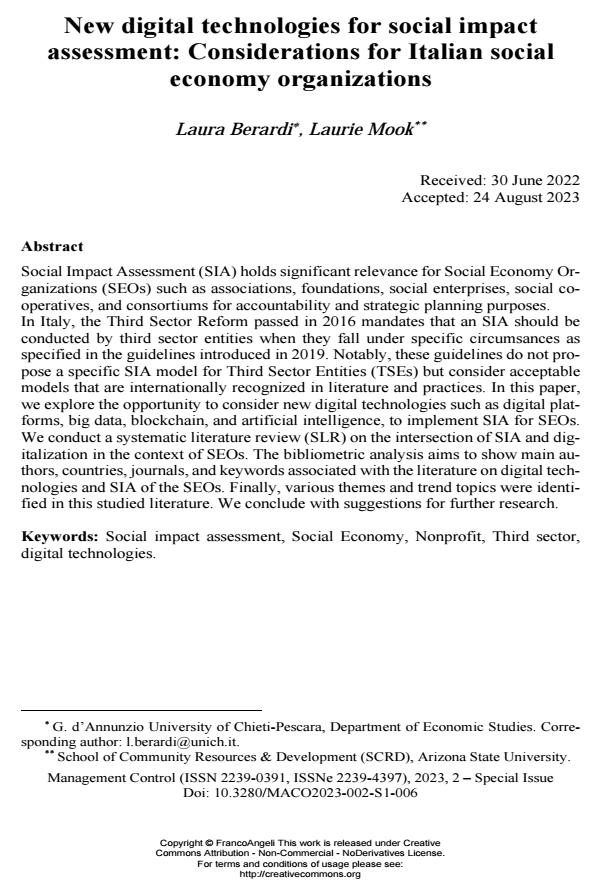New digital technologies for social impact assessment: Considerations for Italian social economy organizations
Titolo Rivista MANAGEMENT CONTROL
Autori/Curatori Laura Berardi, Laurie Mook
Anno di pubblicazione 2023 Fascicolo 2023/2 Suppl.
Lingua Inglese Numero pagine 24 P. 109-132 Dimensione file 431 KB
DOI 10.3280/MACO2023-002-S1006
Il DOI è il codice a barre della proprietà intellettuale: per saperne di più
clicca qui

FrancoAngeli è membro della Publishers International Linking Association, Inc (PILA)associazione indipendente e non profit per facilitare (attraverso i servizi tecnologici implementati da CrossRef.org) l’accesso degli studiosi ai contenuti digitali nelle pubblicazioni professionali e scientifiche
Social Impact Assessment (SIA) holds significant relevance for Social Economy Organizations (SEOs) such as associations, foundations, social enterprises, social cooperatives, and consortiums for accountability and strategic planning purposes. In Italy, the Third Sector Reform passed in 2016 mandates that an SIA should be conducted by third sector entities when they fall under specific circumsances as specified in the guidelines introduced in 2019. Notably, these guidelines do not propose a specific SIA model for Third Sector Entities (TSEs) but consider ac-ceptable models that are internationally recognized in literature and practices. In this paper, we explore the opportunity to consider new digital technologies such as digital platforms, big data, blockchain, and artificial intelligence, to implement SIA for SEOs. We conduct a systematic literature review (SLR) on the intersection of SIA and digitalization in the context of SEOs. The bibliometric analysis aims to show main authors, countries, journals, and keywords associated with the litera-ture on digital technologies and SIA of the SEOs. Finally, various themes and trend topics were identified in this studied literature. We conclude with suggestions for further research.
Parole chiave:Social impact assessment, Social Economy, Nonprofit, Third sector, digital technologies.
Laura Berardi, Laurie Mook, New digital technologies for social impact assessment: Considerations for Italian social economy organizations in "MANAGEMENT CONTROL" 2 Suppl./2023, pp 109-132, DOI: 10.3280/MACO2023-002-S1006